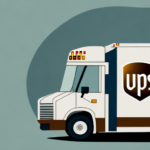Understanding UPS 2023 Rates: What You Need to Know
UPS remains one of the world's leading package delivery companies, serving both businesses and individuals globally. However, the cost of shipping with UPS is set to rise in 2023, prompting many to reconsider their shipping strategies and budgets. This article delves into the new UPS rates, their implications, and strategies to navigate these changes effectively.
The Impact of UPS 2023 Rate Changes on Your Business
In 2023, UPS announced an average rate increase of 4.9%, with larger packages and international shipments experiencing even higher hikes. This adjustment is primarily driven by rising fuel costs and significant investments in new technologies and infrastructure.
According to UPS's [official statement](https://www.ups.com/us/en/help-center/article.page?name=ups-announces-early-year-rate-changes&kid=aa6722a9), businesses that rely heavily on UPS for shipping, especially those with high volume or international logistics, will feel a more substantial impact on their shipping budgets. It's crucial to assess how these changes will affect your overall operational costs and explore ways to mitigate the financial strain.
Key Factors Influencing UPS Shipping Rates
Package Weight and Dimensions
The weight and size of your packages are fundamental determinants of UPS shipping costs. Heavier and bulkier items naturally incur higher shipping fees. Optimizing package sizes and reducing weight where possible can lead to significant cost savings.
Destination and Shipping Speed
The destination of your shipment greatly affects the cost. International shipments are typically more expensive due to longer transit times and additional customs fees. Additionally, choosing expedited shipping options like air or next-day delivery will increase costs compared to standard ground shipping.
Fuel Surcharges and Additional Fees
UPS applies fuel surcharges to offset the fluctuating costs of fuel, which can vary based on global oil prices. Other potential fees include residential delivery surcharges, delivery area extensions, and special handling fees for certain types of goods.
Strategies for Managing and Reducing UPS Shipping Costs
Negotiate Better Rates
Businesses with substantial shipping volumes have the leverage to negotiate discounted rates with UPS. Engaging with a UPS account representative or leveraging a shipping consultant can help secure more favorable pricing agreements tailored to your shipping needs.
Optimize Packaging and Shipping Practices
Efficient packaging can significantly reduce both size and weight, leading to lower shipping costs. Consider using UPS-approved packaging solutions or investing in packaging optimization software to enhance efficiency and minimize material costs.
Utilize UPS Tools and Resources
UPS offers a variety of tools such as the Shipping Calculator and account management resources to help businesses forecast and manage their shipping expenses. Leveraging these tools can provide deeper insights into shipping patterns and uncover opportunities for cost reduction.
Comparing UPS with Other Shipping Carriers
While UPS is a dominant player in the shipping industry, it faces competition from carriers like FedEx and USPS, all of which have announced rate increases for 2023. Comparing the rates and services of these carriers can help businesses identify the most cost-effective solutions. Key factors to evaluate include delivery speed, reliability, coverage areas, and customer service quality.
Additionally, exploring alternative shipping methods such as regional carriers or shipping consolidators may offer more competitive rates for specific shipment types. Assessing multiple options ensures that you are utilizing the best available services tailored to your operational needs.
Technological Innovations and Future Trends in Shipping
Technological advancements continue to reshape the shipping industry. UPS's investment in drone delivery programs exemplifies how technology can enhance operational efficiency and expand service reach to remote areas. Automated sorting systems and advanced tracking technologies are also contributing to reduced operational costs and improved delivery accuracy.
Integrating new technologies into your shipping processes can lead to long-term cost savings and streamlined operations. Staying informed about industry innovations allows businesses to adapt and leverage emerging opportunities to optimize their shipping strategies further.
Preparing for the UPS Rate Changes
Analyze Your Shipping Needs
Begin by conducting a comprehensive analysis of your current shipping patterns. Identify the most frequently shipped items, average package sizes, and primary destinations. Understanding these factors will help you determine how the rate changes will specifically impact your business and where adjustments are necessary.
Implement Cost Management Strategies
Adopt proactive measures such as negotiating rates, optimizing packaging, and utilizing UPS's tools to manage costs effectively. Developing a detailed shipping budget and regularly monitoring expenses will aid in maintaining financial control and identifying areas for improvement.
Stay Updated with Industry Trends
Keep abreast of ongoing changes and future projections within the shipping industry. Engaging with industry reports and reputable sources, such as the [ShipScience website](https://www.shipscience.com/), can provide valuable insights to help you make informed decisions and stay competitive.
Common Pitfalls in Managing Shipping Costs with UPS
Failing to Track Shipping Expenses
Neglecting to monitor shipping costs can lead to unnoticed inefficiencies and overspending. Implementing a reliable tracking system to monitor all shipping-related expenses is crucial for identifying opportunities to reduce costs and improve operational efficiency.
Choosing the Cheapest Shipping Option Without Considering Needs
While reducing costs is important, it is equally vital to balance cost-saving measures with service quality. Opting for the cheapest option may result in longer delivery times or reduced reliability, which can negatively impact customer satisfaction and business reputation.
Ignoring Additional Fees and Surcharges
Be mindful of all potential surcharges and additional fees that can inflate shipping costs. Ensuring a thorough understanding of UPS's pricing structure helps avoid unexpected expenses and allows for more accurate budgeting and cost forecasting.
Conclusion
Managing shipping costs with UPS in light of the 2023 rate increases requires strategic planning and informed decision-making. By understanding the factors influencing shipping rates, comparing different carriers, and implementing effective cost management strategies, businesses can navigate the changing landscape of shipping expenses successfully. Leveraging available resources and staying abreast of technological advancements will further enhance your ability to maintain efficient and cost-effective shipping operations.




















